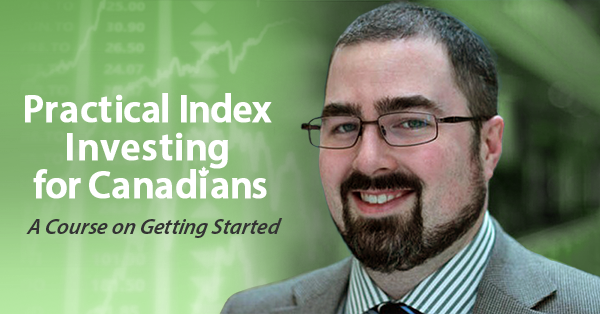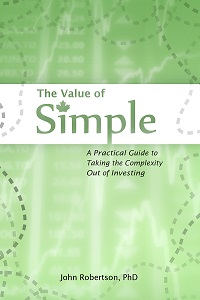A very common question people ask is “Am I on track to retire?†It’s usually a good starting place for an engagement with a planner, especially if you’re within a decade or so of your planned retirement date. That plan is going to come with a lot of good discussions of your goals, some contingency plans, how you use your money, etc., etc. It’s also going to cost a few thousand dollars for the support and those conversations (and I’m deliberately avoiding saying “for the plan†as though the document in isolation is valuable outside of the process).
But for some of us, we just want to get a ballpark idea of whether we’re on track or not, and we want to do it ourselves with a whiteboard and spreadsheet. So here’s how I think about approaching the problem:
1. Define your goals
2. Add up your resources
3. Project forward to see what might happen
4. Analyze
5. Repeat/Try to break it
Now each of those phases can be more work than the few words make it sound: even “just†defining your goals can be a lengthy conversation about what you want the rest of your life to look like. There is definitely room there for a planner or coach to provide a lot of value in the process, but you can get a large part of the way there yourself.
Unfortunately, the process isn’t going to return a really clean yes or no answer. Instead we’re going to get shades of “maybe, if†or “probably, I think.â€
Define Your Goals
Part of defining your goals is the straightforward part: figuring out the kind of lifestyle you want in retirement, and then translating that into a dollar amount for your spreadsheet. But it also involves thinking about trade-offs: would you be ok with a more variable income/spending profile, or do you want a steady stream of retirement income? Will your spending decline as you age (less travel?), stay fairly level (with inflation adjustments) or increase (more health/support needs)?
And when thinking about the future, how much lifestyle inflation will you face? Back in grad school, I was pretty sure I would be perfectly content retiring to a nice, quiet one-bedroom apartment somewhere and would only need $30,000/yr or so. Needless to say, my target has risen over the years, and now I use a figure that assumes a little more lifestyle inflation.
There can be a lot of moving parts that can quickly overwhelm a simple DIY approach.
But for the sake of example, let’s say that Elrond Example has had those conversations, and boiled it down to three numbers: he wants to have at least $40,000/yr in retirement income, but would like to aim for $55,000/yr, and Elrond would like that retirement to start at age 65 (assuming he’s 40 now). I also have to be careful to understand how I’ve framed these numbers. For example, if I figure that Elrond makes $70,000/yr pre-tax now, and in retirement will have a few fewer expenses and won’t have to save $7,000/yr anymore, I get to $55,000/yr pre-tax — Elrond will still be taxed on that income and have a perfectly fine retirement, so I can use pre-tax numbers in my later calculations. But if I mean after-tax dollars, as in the amount he can actually spend, I’ll have to account for the taxes. Or, maybe using a different method I can figure that he’ll want $45,000/yr after-tax to spend in 2017 dollars (with a floor of $34,000/yr). Various tools and methods will use different amounts.
Either way will work for you, you just have to be clear with yourself what it is you’re doing. Same for inflation: it’s easiest IMHO to think about real dollars: when retirement actually comes Elrond may be spending $100,000/yr in 2040 dollars, but I can think of that more easily as $45,000 in 2017 dollars — but I will have to adjust my rates of return to be real rates of return (i.e., subtracting out inflation).
One last number to consider is how long you’ll need this support to last. Living to age 95 is a decent rule-of-thumb to use.
Add Up Your Resources
I’m not going to have to fully fund my retirement goals on my own — I’m going to have CPP, OAS, and possibly a pension to help out. Enumerating how much support I get from those guaranteed sources may go a long way towards setting my mind at ease. If reliable, inflation-adjusted income from secure sources like a defined benefit pension, CPP, OAS covers a large portion of my spending needs, I’m automatically going to be closer to being on track. What’s your ratio of spending needs to secure retirement income look like?
I also need to figure out where I stand already in terms of how much I already have invested.
For the sake of the example, let’s say that Elrond can count on the maximum OAS support (in 2017 dollars that’s just over $7,000/yr), and that I’ve used the CPP calculator to estimate Elrond’s CPP income at $8,000/yr in 2017 dollars. Elrond also has a small defined benefit pension. He looks up the statement, which tells me that at age 65, with a bunch of assumptions, he’ll be eligible for $15,000/yr in (pre-tax, real) pension income.
Elrond can also look at his investment statements to see that he has $60,000 in TFSA, $20,000 in RRSP, and $20,000 invested in a non-registered account, all invested in a “balanced†portfolio. He’s also saving (on top of his pension) $7,000/yr.
I’m not necessarily looking for a net worth statement here. For example, I wouldn’t subtract a mortgage from the amount invested, as I’m already accounting for that in the cash flow: the amount Elrond has to save for retirement is after the mortgage payment is made, and the debt will be paid off several years before his planned retirement age.
Project Forward to See What Might Happen
Once you have your needs and your resources, you can start to play with a variety of tools to see what will happen and try to approach an answer about whether you’re on track. If you’ve got time and an inordinate amount of patience, you can do it all by hand on paper.
If today my example person Elrond has $100,000 in total nominal investments and I assume a 4.5% real return (net of fees), then next year Elrond will have $104,500, plus another $7,000 that he has saved. I can keep projecting forward like that up until retirement (though I’d likely track each account separately, as each dollar in an RRSP is not the same as on in a TFSA).
Then when he hits retirement, I can use a rule of thumb like the ~4% figure for a sustainable withdrawal rate to see if the portfolio will last, or I can model drawing it down based on a more conservative asset mix.
Then I can do it again using different assumptions about whether Elrond might not hit his savings goals in a few hard years, or if returns are different. We’ll come back to the point about using different assumptions.
Analyze
Now I’ve done a lot of work and really want to know, am I on track?
Well, a quick analysis says that Elrond is at least not in serious trouble: in this example, he had such modest needs (income floor of $40,000/yr / spending floor of $34,000/yr) and enough guaranteed support (CPP, OAS, defined-benefit pension, total of $30,000/yr) that he doesn’t need to draw much from his portfolio. Using a 3.5% version of the 4% rule-of-thumb (to be conservative about rates of return and the effect of real-world investment fees), he only needs a portfolio of $285,715 to support his minimum spending, and in my projections his TFSA alone would get him there.
What about his more ideal target retirement lifestyle? Using the same very simplistic method, he’d need a portfolio of $714,285 to cover the $25,000/yr beyond any guaranteed sources of income, but my simple math and assumed rate of return only puts him at $613,000 by age 65. That’s pretty close, especially with all the assumptions involved, and maybe I was being a bit conservative with my rates of return, so maybe he is on track? Hmm, he’d have to save an extra $2,250/yr to hit that number, which is a pretty big change to his budget… Perhaps I can be a bit more aggressive because the bulk of his investments will be in his TFSA in this example, which won’t have a tax drag… and we quickly see how a black-and-white answer is hard to come to.
Repeat/Try to Break It
Sometimes we just want to be reassured. But often it’s more useful to be better prepared. So try a couple of different assumptions in your planning and see if you’re still ok with the answer — if not, you may have to start adjusting your course (or expectations) now.
A big thing to consider is the rates of return you use: there’s a lot of uncertainty in what your investments might return, and it ties deeply into the core of your saving/investing projections. Professional planners will sometimes use Monte Carlo software that will run thousands of simulations of future scenarios to try to see how robust your plan is. IMHO, when you still have over a decade before retirement, that can be overkill, but you definitely want to look at at least a few scenarios with your straight-line/constant return tools (best guess, good, bad) to see if you need to be more conservative.
When you get closer to retirement, things like sequence of returns risk will be important to consider, and that’s why paying a planner to help can really be worth it. But from afar a bad sequence with decent average returns is still a “bad scenario†that can be approximated as a scenario with just an overall lower straight-line return.
For this example, I used the Ballparkinator (click here to download the spreadsheet with the numbers for this specific example), which lets me get a quick look at a few simplified retirement scenarios in one go (though the straight-line methods are a bit optimistic when looking at when the money runs out).
I can see that Elrond Example can meet his floor spending even under a fairly poor worst-case scenario (0% real bond yields, 2% real equity returns, and paying e-series rates of investment fees). Even if he has to retire 3 years earlier than planned for health reasons (assuming a modest decrease to his pension and CPP benefits), under our base case returns he’s in good shape on his current path to at least meet his minimum spending needs.
However, he’s not guaranteed to be on track for his more ideal retirement: sure, he’ll get there with a rosy scenario where his bonds have a 2% real return and his equities an 8% real return (before fees), which has happened in some points in the past, but even in our base case scenario he’ll run out of money before turning 95 in this example.
Again, a strict yes/no answer is hard: with a relatively optimistic outlook for investment returns over the next few decades, sure, he’s well on track; even with a fairly realistic base case he’ll have money for his ideal retirement goals for longer than he’s likely to live (sometime into his 80’s). But he’s not so solidly there that he can afford to retire any earlier if his ability to work fails a few years early, and a bad few decades for his investments could also put a crimp on his retirement plans. Though he may never see a birthday cake adorned with 90 candles, he wants to prepare for that opportunity.
It’s also hard to come up with an exact amount extra he needs to save. To get his base case scenario to give us 95 as an age where he runs out of money, we have to increase his savings from $7,000/yr to $8,250/yr. But even at that higher savings rate, he can barely cope with an early exit from the workforce at 61 (with associated decreases in CPP and pension income), and an exit at 60 would compromise his minimum spending target, even under the base case investment returns. Is that enough of a cushion?
And there’s no realistic way for Elrond to support his ideal retirement spending level even after worst-case investing returns. How conservative is too conservative?
We can also try a different way of analyzing the numbers. At the bottom of the Ballparkinator is the so-called “backwards methodâ€, which uses a set sustainable withdrawal rate (variations on the 4% “ruleâ€) plus any gaps in spending to see how big a nest egg Elrond needs at the beginning of retirement, then figures out how much he needs to save each year to get to a nest egg that size based on the various real return rates (note that this ignores taxes). If Elrond wants to be somewhat conservative and use 3.6% as his sustainable withdrawal rate, then under the base case scenario, he needs to bump his current savings rate of $7,000/yr up to over $9,500/yr. While under the best case scenario, he’s saving more than he needs (a nice problem to have), it’s not possible for him to save enough to meet his ideal spending needs under the worst-case investment returns scenario. But, using this method and his minimum spending needs, he is saving more than the tool returns for worst-case scenario.
So looking at it from several angles and with a few different assumptions, Elrond appears to be most of the way towards being on-track for retirement. Even if a few things go wrong, he will quite likely still be able to meet his minimum retirement income goals. His ideal retirement is possible for the track he’s on if things go well (he can continue to work to his target age without having to take time off from savings due to an emergency or leaving the workforce early, decent investment returns, etc.). But he may want to re-examine his plan to see if he should start envisioning something a touch more modest (but still well above his minimum), or start finding a way to save and invest more.
And of course, there are other possibilities too. In this example, we used the “balanced†portfolio for Elrond, which in the spreadsheet is a simple 50-50 mix of fixed income and equities. If we believe that equities will have a higher return over the next 25 years, and if Elrond has the personality for more investing risk (certainly he has the time horizon), then moving to a higher equity weighting (like the age-10 rule-of-thumb from the investing course) may also help him achieve his goals — but this is not a solution to take lightly, and it’s all too easy to just be more optimistic on your future rate of return assumptions to magically get back on track.
Summary
There’s no simple formula for answering the very simple question of “am I on track?†There’s lots of uncertainty between now and retirement, from what your investment returns will be to how much you’ll be able to save or even how much you’ll want to spend. But if you can meet your minimum needs even under a “bad†scenario and get into a happy range for your spending with a more realistic base case scenario, then you’re probably on the right track.
And as you get within a decade or so of retirement, it can be worth meeting with a planner to examine these questions in more detail and discuss the trade-offs involved.



 Questrade: use QPass 356624159378948
Questrade: use QPass 356624159378948 Passiv is a tool that can connect to your Questrade account and make it easier to track and rebalance your portfolio, including the ability to make one-click trades.
Passiv is a tool that can connect to your Questrade account and make it easier to track and rebalance your portfolio, including the ability to make one-click trades.